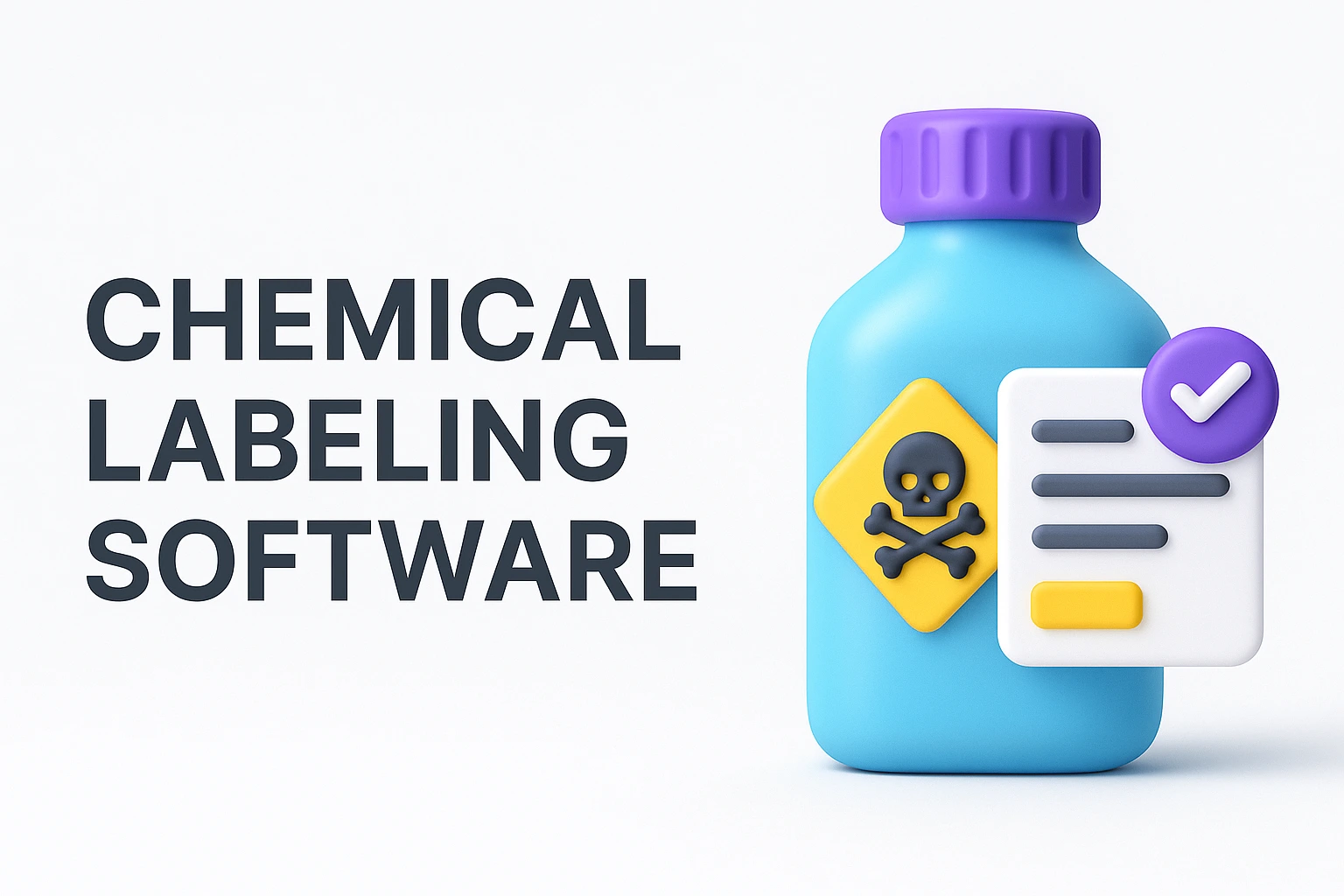In today’s rapidly evolving industrial landscape, businesses handling hazardous chemicals face mounting pressure to ensure safety, efficiency, and regulatory compliance. One of the most effective ways to address these challenges is by leveraging Powerful Chemical Labeling Software. This innovative tool plays a crucial role in modern chemical management, helping organizations stay compliant with global standards while optimizing internal workflows.
What is Chemical Labeling Software?
Chemical labeling software is a digital solution that automates the creation, management, and printing of chemical labels. It integrates data from various sources such as safety data sheets, regulatory databases, and inventory management systems to generate compliant and accurate labels. By incorporating features that support GHS compliance, multilingual printing, and label customization, this software has become indispensable in laboratories, manufacturing plants, and warehouses.
Why GHS Compliance Matters
The Globally Harmonized System (GHS) standardizes the classification and labeling of chemicals to ensure clear communication about chemical hazards. By using chemical labeling software with built-in GHS compliance support, companies can ensure that labels include essential elements such as signal words, hazard statements, and precautionary statements.
Failure to meet these standards can result in regulatory fines, employee health risks, and legal liabilities. Thus, having an automated solution ensures that all hazardous material labeling is both accurate and up to date.
Key Features and Functionalities
1. Dynamic Label Templates
The software provides customizable templates that adapt to various container sizes and formats. Whether you need to print small vials or large drums, chemical labeling software can handle it seamlessly.
2. Safety Data Sheet Management
Safety data sheet management is integral to maintaining compliance. The software ensures that the most recent SDS information is used, reducing human errors.
3. Barcode Labeling System
An integrated barcode labeling system helps track chemicals throughout the supply chain, enhancing both safety and traceability. Scannable barcodes improve inventory accuracy and speed up audits.
4. Multilingual Label Support
Organizations operating globally need multilingual label support to comply with local regulations and ensure worker safety. This feature allows printing labels in various languages based on region-specific requirements.
5. Labeling Automation
Manual processes are prone to errors and inconsistencies. Labeling automation ensures standardized labeling and significantly reduces operational delays.
How Chemical Labeling Software Enhances Operations
Enhances Workplace Safety
With accurate labeling, employees are better informed about the chemicals they handle. The use of hazard communication standards helps in reducing accidents and ensures everyone knows how to handle chemicals safely.
Streamlines Compliance
Regulatory compliance software helps businesses comply with various regional and international laws like OSHA, CLP, and REACH. The software can auto-update with changes in regulations, ensuring ongoing compliance.
Improves Efficiency
By integrating with ERP and chemical inventory management systems, the software accelerates the labeling process, helping companies meet production deadlines without compromising safety.
Cost Savings
Automation minimizes rework, reduces waste, and avoids regulatory fines, leading to tangible cost savings. Chemical labeling software proves to be a cost-effective solution in the long run.
Industries That Benefit Most
- Pharmaceuticals: Ensure precise hazardous material labeling for active ingredients.
- Manufacturing: Optimize workflows and maintain GHS compliance in large-scale production.
- Oil and Gas: Improve safety with real-time chemical inventory management.
- Laboratories: Facilitate better documentation through barcode labeling systems.
- Agriculture and Pesticides: Comply with international hazard communication standards.
How to Implement Chemical Labeling Software
- Assess Your Needs: Evaluate the scale of your operations and specific compliance requirements.
- Choose the Right Vendor: Look for features like labeling automation and multilingual support.
- Data Integration: Connect the software to your existing SDS and inventory systems.
- Training: Educate your staff on using the system effectively.
- Monitor and Optimize: Regularly review usage data to make improvements.
Future of Chemical Labeling Technology
As regulatory requirements evolve, so will the capabilities of chemical labeling software. Future trends include AI-powered risk analysis, mobile-friendly interfaces for on-site labeling, and cloud-based platforms for global accessibility.
Conclusion
The right chemical labeling software does more than just print labels; it transforms how businesses manage chemical compliance, safety, and efficiency. With features like labeling automation, barcode labeling systems, and multilingual label support, it is an essential tool in any chemical-handling operation.
Take the next step in safeguarding your workplace and simplifying compliance. Get started with Gegosoft’s Powerful Chemical Labeling Software

